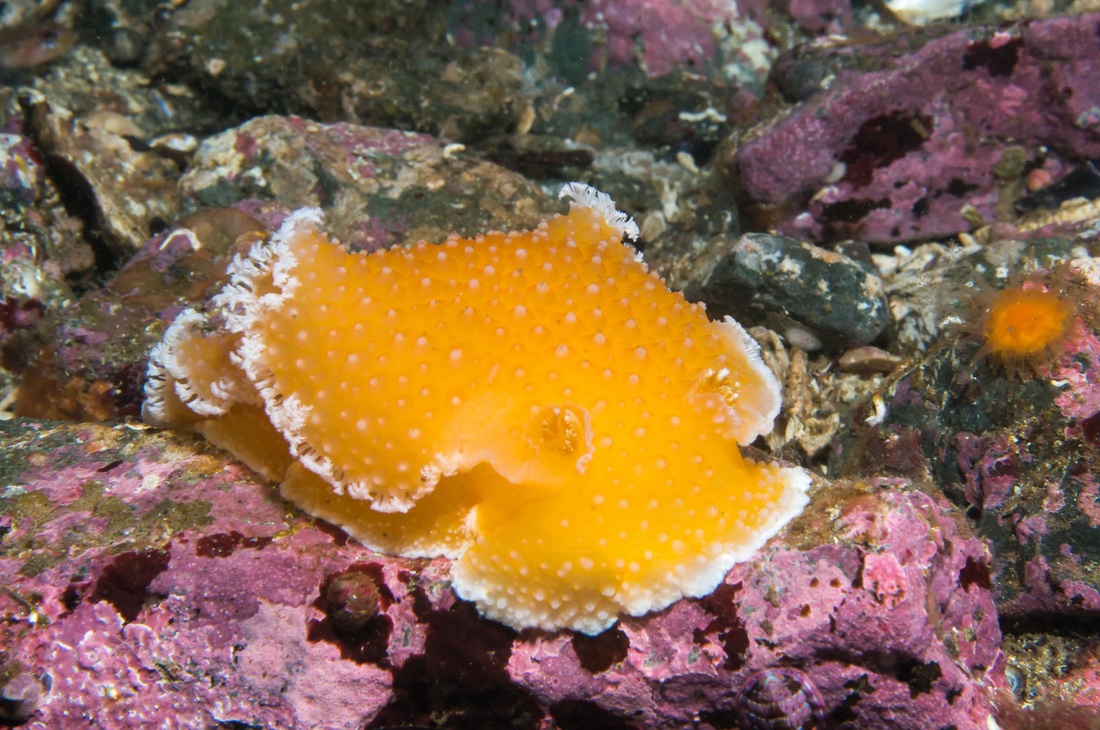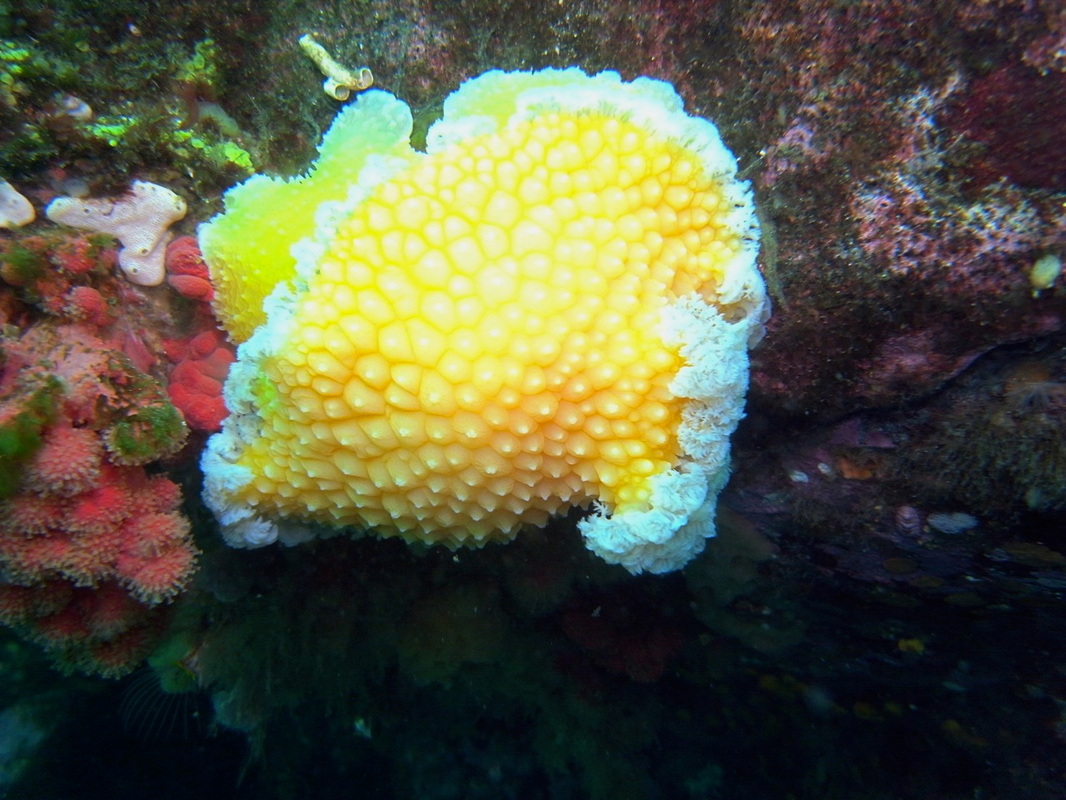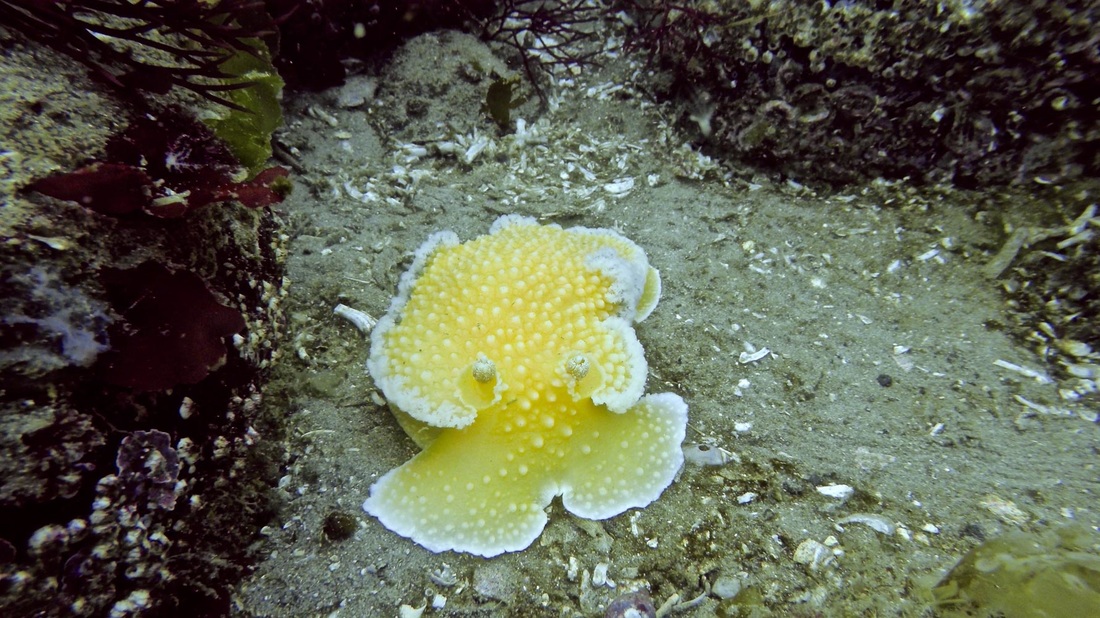Orange peel nudibranch • Tochuina tetraquetra
Identification
This large nudibranch's bright orange-yellow colour and frilly white margin give it a distinctive appearance reminiscent of an orange peel. The white margin is composed of gill tufts; the dorsal side is also covered with white tubercles. The front end of the animal can be distinguished by a white-lined oral veil and stubby rhinophores that look like small orange peel curls (photo). This species gets to 50 cm long.
Habitat & Range
The orange peel nudibranch inhabits rocky areas in the shallow subtidal. Its range extends along the Kurile Islands in Siberia and from northern Alaska to southern California. It is not a common species.
Human Uses
This nudibranch is known as tochni in the Kurile Islands, where it is cooked or eaten raw.
Intriguing Info
The orange peel nudibranch feeds on hydroids, sea pens, and soft corals. It is the largest nudibranch in the world. Click here for a video with footage of this species.
iNaturalist
https://www.inaturalist.org/taxa/50322-Tochuina-tetraquetra
This large nudibranch's bright orange-yellow colour and frilly white margin give it a distinctive appearance reminiscent of an orange peel. The white margin is composed of gill tufts; the dorsal side is also covered with white tubercles. The front end of the animal can be distinguished by a white-lined oral veil and stubby rhinophores that look like small orange peel curls (photo). This species gets to 50 cm long.
Habitat & Range
The orange peel nudibranch inhabits rocky areas in the shallow subtidal. Its range extends along the Kurile Islands in Siberia and from northern Alaska to southern California. It is not a common species.
Human Uses
This nudibranch is known as tochni in the Kurile Islands, where it is cooked or eaten raw.
Intriguing Info
The orange peel nudibranch feeds on hydroids, sea pens, and soft corals. It is the largest nudibranch in the world. Click here for a video with footage of this species.
iNaturalist
https://www.inaturalist.org/taxa/50322-Tochuina-tetraquetra
References
Cowles, D. (2007). Tochuina tetraquetra (Pallas, 1788). Invertebrates of the Salish Sea. Rosario Beach Marine Laboratory. Accessed 16/02/2015.
Harbo, R. M. (2011). Whelks to whales: Coastal marine life of the Pacific Northwest [revised]. Madeira Park, BC: Harbour Publishing. P. 156.
Lamb, A., and Hanby, B. (2005). Marine Life of the Pacific Northwest [electronic version]. Madeira Park, BC: Harbour Publishing.
Authors and editors of page
Kelly Fretwell and Brian Starzomski (2015).
Cowles, D. (2007). Tochuina tetraquetra (Pallas, 1788). Invertebrates of the Salish Sea. Rosario Beach Marine Laboratory. Accessed 16/02/2015.
Harbo, R. M. (2011). Whelks to whales: Coastal marine life of the Pacific Northwest [revised]. Madeira Park, BC: Harbour Publishing. P. 156.
Lamb, A., and Hanby, B. (2005). Marine Life of the Pacific Northwest [electronic version]. Madeira Park, BC: Harbour Publishing.
Authors and editors of page
Kelly Fretwell and Brian Starzomski (2015).







